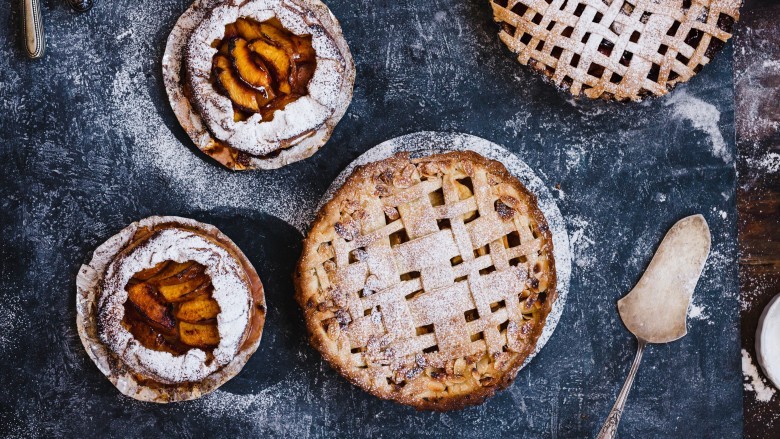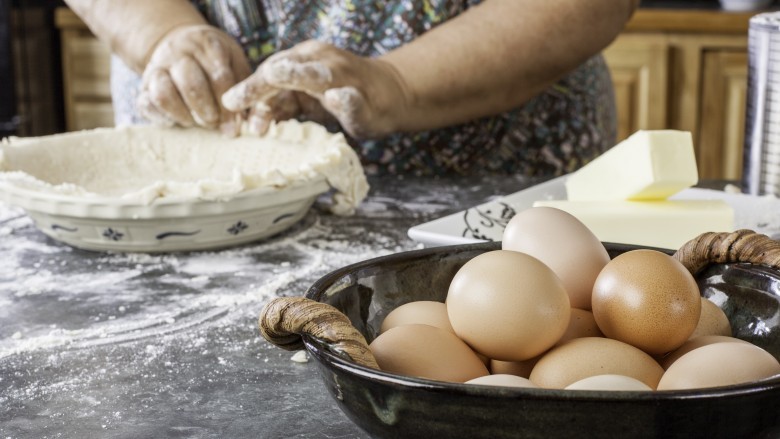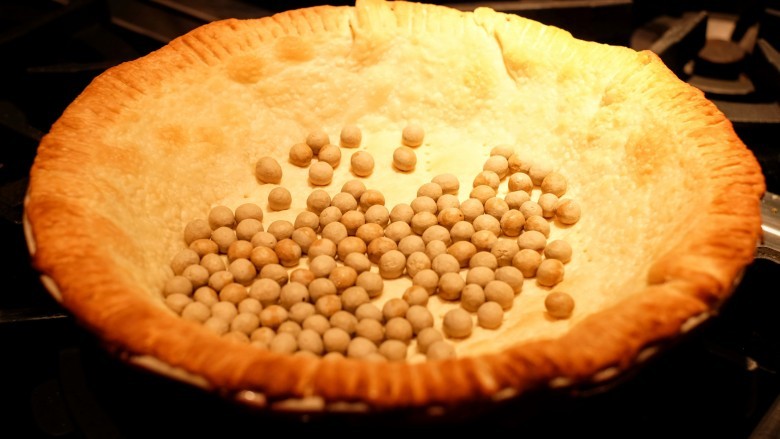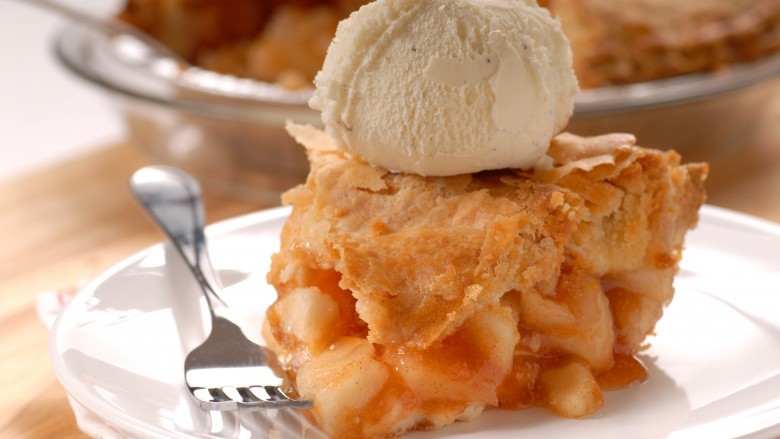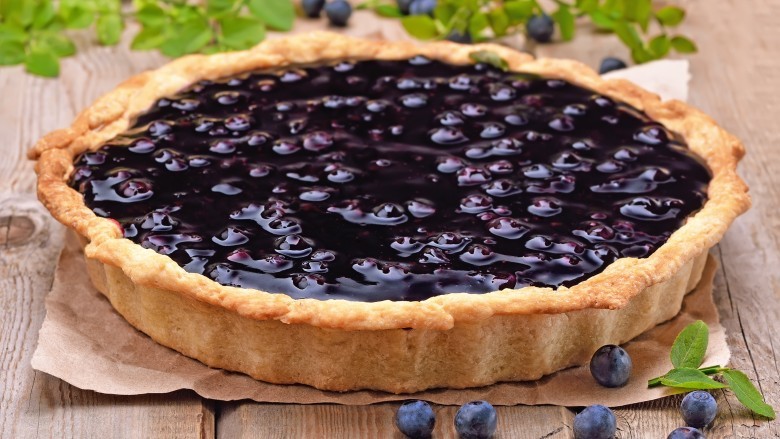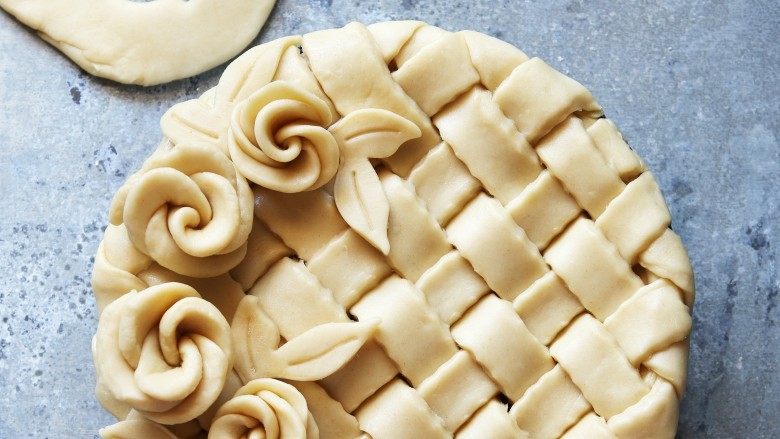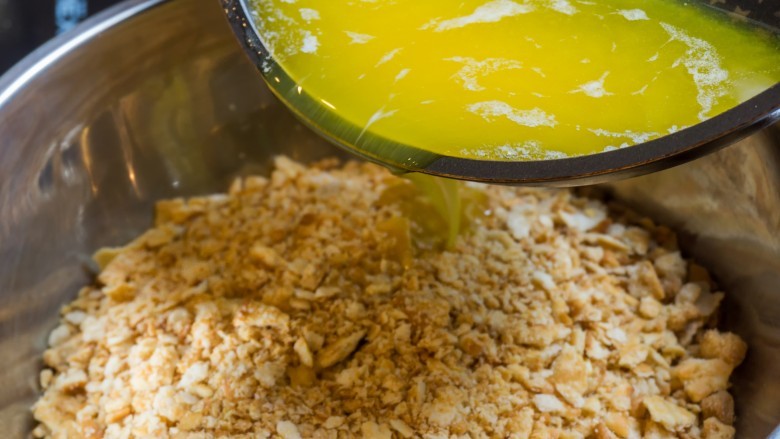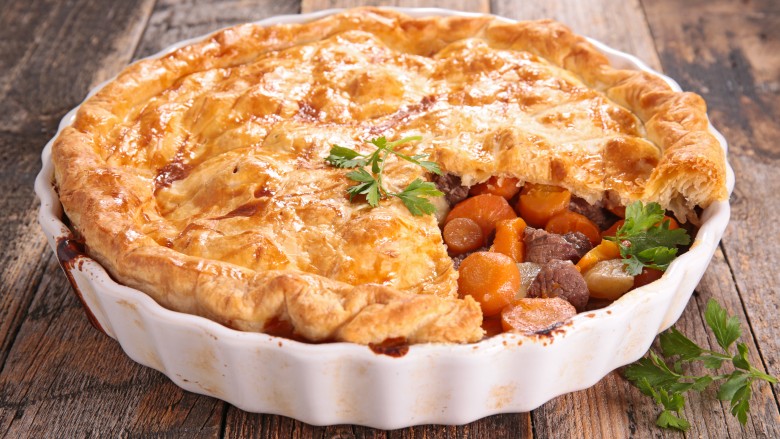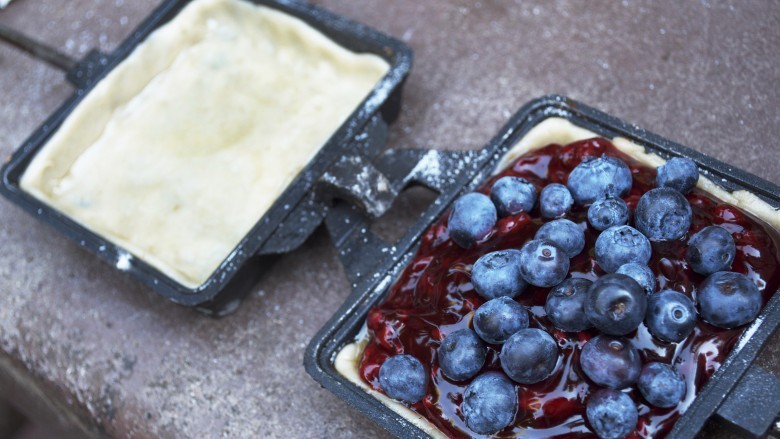Mistakes You're Making When Cooking Pies
While pie may be one of the main dessert food groups, sometimes the thought of making one is downright scary. Most of the fear comes from the crust, but once you've mastered that, the rest is simple. Pie is one of the most easily adaptable recipes, and depending on which crust or filling you decide on can give you endless pie making possibilities. Although Thanksgiving is a time when pies shine the brightest, if you follow these tips, your pies will be the star of the table all year long. You may even feel ready enough to enter a pie bake-off at your local county fair, and you'll never think about buying a pie again.
Not using the right fat
Whether you decide to make a crumb crust or a crust from dough, choosing the right fat, and the right amount of fat, is important. For a crumb crust like Katie Lee's chocolate chip cookie pie crust, not using enough butter leaves you with a crumbly mess that won't hold up. But when it comes to pie dough, either sweet or savory, the right fat depends on your preference. I prefer an all-butter crust, like this one from Epicurious, for taste and flakiness. Some prefer a crust with shortening, like Crisco, the key ingredient for a crisper dough. For the secret to a super flaky crust, some bakers even rely on lard. Every great pie baker has what they believe is the secret to great pie, but at the end of the day it comes down to what you like best.
Getting too handsy with the dough
Once you find the perfect dough and the right fat to incorporate, you want to be sure you don't get too handsy with the dough. What do I mean? You can overwork the dough causing the gluten in the flour to toughen and your light and flaky pastry will have the consistency of bread dough. Ugh. The other problem with overworking the dough is having hot hands. This is a problem I'm familiar with because I have warm hands, i.e. I'm never cold. The heat from my hands transfers to the dough and ends up melting all those cold pieces of fat that are essential to creating a flaky crust. Bon Appétit has a step-by-step guide to ensure you'll never again mess up a pie crust, including using a food processor to quickly mix the dough. If the fat melts before it's ready to bake, the end result will be a flat, dense crust, and a crust like that won't be winning any blue ribbons.
Not using pie weights
Pie weights? What are pie weights? Well, they aren't little barbells the pie uses to get stronger. Pie weights prevent the crust from shrinking or bubbling up during baking. They are reusable, come in various types including ceramic and stainless steel, and work by holding the shape of the dough during the process of blind baking. Blind baking is a technique you'll use when making a pie that doesn't have a cooked filling or where the filling will cook faster than the crust itself, like lemon meringue pie. You don't have to shell out a lot for pie weights. By using something readily available like granulated sugar, as demonstrated by Serious Eats, you'll be able to evenly weigh down the pie and once cooled, use the same sugar to bake with. Dried beans are an economical substitute, and the best part is that you can continue to use them pie after pie. Just don't try to eat them afterwards — keep these beans strictly for baking.
Not using the right pan
Just as the right crust and filling are essential to the perfect pie, the right pan is also key. Glass, aluminum, ceramic, the choices are endless. You don't need to stick with a round pie plate, either. Try an oblong sheet pan for a slab pie or a deeper depth pan for a mile-high or deep dish pie. The bigger the pan, the more filling you can fit — yum! Or ditch the pan altogether and fold the dough around cut up fruit or vegetables for a rustic pie called crostata.
Soggy pies
After the crust, the most important element of a pie is, of course, the filling. Pie filling is only limited by your imagination, and since most pie fillings are liquid, you'll want to be sure to have enough of a thickener in the filling. This is especially true with fruit pies, and there is a complete guide on King Arthur Flour's website that can answer all of your pie thickening questions. A little slurry of cornstarch or flour added to blueberries or cherries will keep the filling together when you go to slice the first piece and will keep the pie from oozing out all over.
Not covering the crust while baking
Every pie baker's worst nightmare are those minutes of continually checking a pie for doneness. It's a common problem when baking pies, the crust is nearly done, but the filling still has a ways to go. Even if you have blind baked the crust as noted above, the crust can start to dry out or burn. What can you do to save you pie? Rim the crust edges with aluminum foil to prevent excess browning. Kelly at the No Empty Chairs blog has an innovative technique that prevents burning and saves your sanity from having to fit tiny pieces of foil around the pie plate. If you're concerned about burning any intricate lattice work that you painstakingly created, tent foil over the top to slow down the browning process.
Wasting the extra dough
Sometimes you roll out the perfect amount of crust, and fit it perfectly into the pie pan, but you're still left with a mound of excess dough. What do you do? Don't toss it, let your creativity fly! You can make lattice work, sculpt leaves for the edges, add a top crust, or create a painted pie crust as Marilyn Johnson from the Sweets to Impress blog showcases.
Only using dough for a crust
While a traditional, buttery crust is delicious, don't limit yourself to just plain dough for pie crust. There are endless tastes and textures to match all fillings. From the traditional graham cracker crust like this one from Sally's Baking Addiction to a pretzel crust for a sweet-salty pie, the crust can take your concoction to a whole other level. Try a chocolate cookie crust as a base for grasshopper pie, like this one from Boulder Locavore or even a gluten-free nut crust, a decadent option from Simply Gluten-free's multi-talented Carol Kicinski.
Only sticking to sweet pies
It's easy to only think sweet when you talk about pie, but don't limit your imagination. You can have pie for any meal, any time of day. Does anything sound better than cozying up to a warm, glorious chicken pot pie at the end of a long day? Or, maybe instead of scrambled eggs for your next brunch try a rich, 4.5-star quiche Lorraine. Don't forget about shepherd's pie, pasties, or my favorite, Italian Easter pie, a traditional pie that's studded with meats and cheeses.
Only using your oven to bake
The oven isn't the only place you can make pie. Don't believe me? Try this sweet and homey handheld fried pie recipe. Love cooking outdoors? Taking a shortcut by using a store-bought crust, this pumpkin pie cooked on a grill will bring the outdoors in like a modern-day pilgrim. Campfire pies, like this strawberry and Nutella version are perfect for a night out under the stars. The possibilities are endless!
